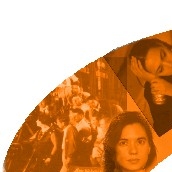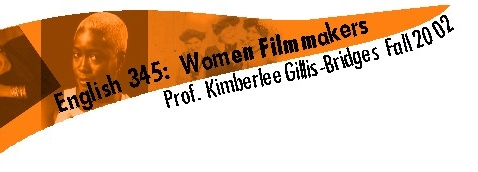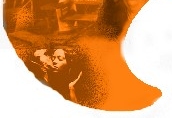


| Course M, 2:30-5:20 W, 2:30-4:20 Thomson 125 |
| Instructor K. Gillis-Bridges Padelford A305 543-4892 MW, 1:00-2:20 |
| Page last updated 12/10/02 |

Class Handouts
All class handouts are in Adobe PDF format unless otherwise specified. To download the free Adobe Reader, click here. The handouts will appear in a new browser window. To return to this page, close the new browser window.
- Instructions for
Submitting Email Attachments
- Language of Film
- Conducting Research in Cinema
Studies (HTML format)
- Assignment Research Guide
- Presentation and
Role-Play Suggestions
- Syllabus
Anne Morey wrote this review of Christina Lane's Feminist Hollywood (a book on reserve for our course) for Film Quarterly. Although she's critiquing a book rather than an article and thus includes more summary than you will, Morey touches on significant aspects of Lane's book, and she supports her analysis well. The document is UW restricted. If you're accessing the web from home and don't use the UW Internet Connectivity Kit, you may have to reconfigure your browser preferences before you can see the article.
Sample Essays
- Becoming
A comparison of the transformations undergone by Cleo and Cher in Agnes Varda's Cleo from 5 to 7 and Amy Heckerling's Clueless. The writer argues that the characters become less self-obsessed, but become the objects of the male gaze. - A Comparison and
Contrast of Endings in Cleo from 5 to 7 and Blue Steel
An examination of how narrative, sound, and shots function to mark "a deliberate and dynamic shift in the female lead’s concept of self" in both films. - Deconstruction of Gender Roles in Blue Steel and Clueless
An analysis of how both films deconstruct gender roles. While the paper concentrates on female gender roles, it contains a brief examination of male roles in each film. - Constructing and Deconstructing Historical Truth
An investigation of how The Watermelon Woman and Boys Don't Cry reveal history as a construct. The writer uses Dunye's film as a lens to critique Peirce's film, but notes that a film like Peirce's may reach and impact a wider audience.
- Cheryl Dunye
Cristina Brendicke and Jamie Chi's presentation on Cheryl Dunye, the "Dunyementary" and The Watermelon Woman.
- U.S.
Film/U.S. Culture Presentations
The following presentations were done for a class on U.S. film and U.S. culture. All relate historical, social, political, and industrial contexts to a particular film. All contain discussion questions for the class.
- Double
Indemnity: This presentation addresses links between film noir
and the post-WWII context as it offers an analysis of Double
Indemnity.
- Hollywood
and HUAC: The presentation discusses the relationship between the
House Unamerican Activities Committee's investigation of Hollywood and
the communism subtext in Invasion of the Body Snatchers.
- The Movies Go to Washington: This presentation addresses politicians' reception of and the political contexts surrounding the 1939 film Mr. Smith Goes to Washington.
The linked profile offers a short biography of Margarethe von Trotta and addresses issues of public and private in three of her films: Marianne and Juliane,Rosa Luxemburg, and Sisters, or the Balance of Happiness. Along with analyzing von Trotta's treatment of the public and the private, the writer examines von Trotta's uses of flashbacks and the intersection of her films and German history.